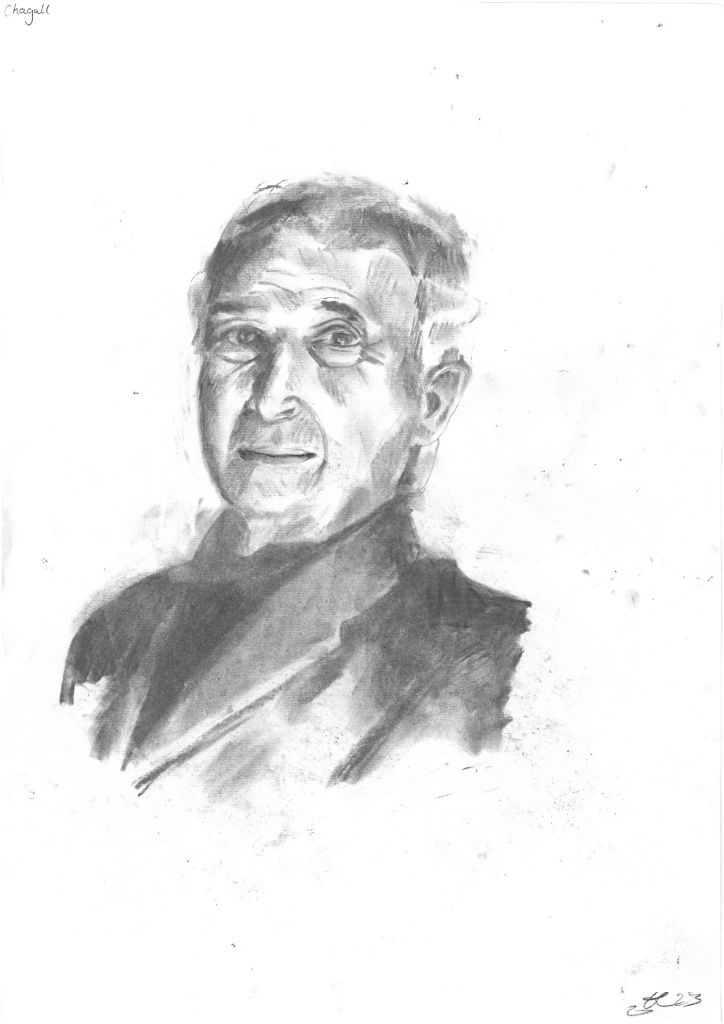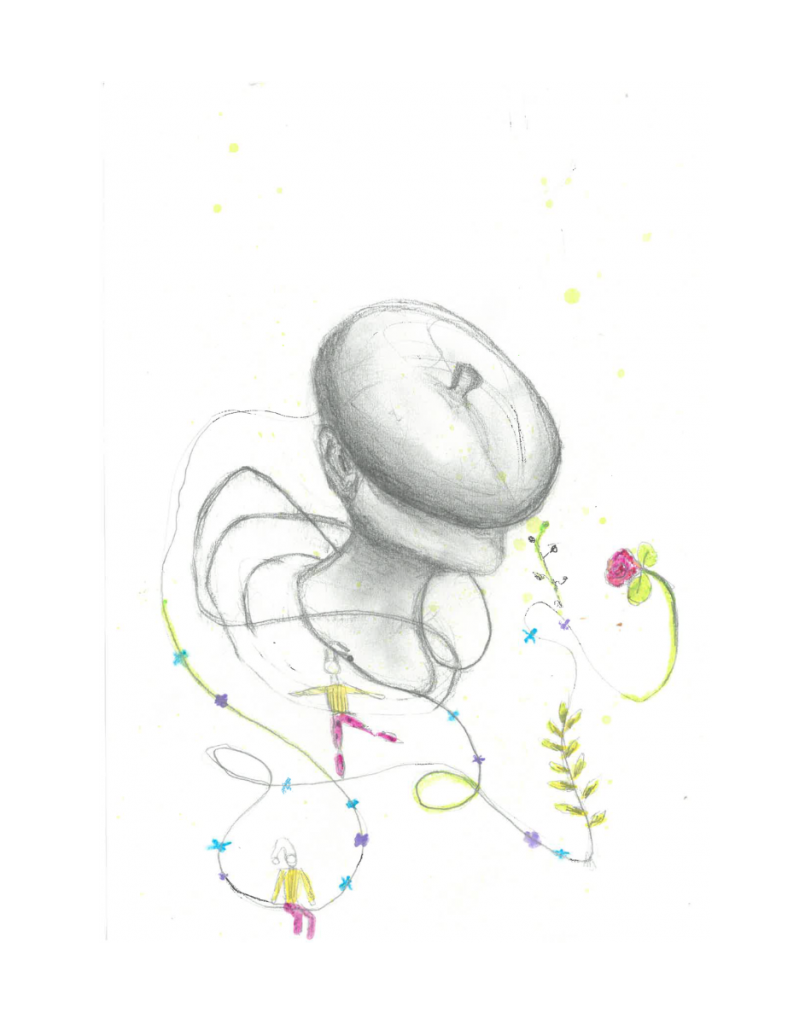The Jewish Museum of Australia: Gandel Centre of Judaica in partnership with the Australian Jewish News, made possible by the Erdi Foundation, are very proud to present a body of work by students who were given the opportunity to view CHAGALL and produce a creative response to the exhibition.
This initiative showcases a diverse collection of visual art and poetry made by school students with a particular talent for and interest in creative pursuits. In addition to their publication here on the Jewish Museum’s website, these works were also published in the pages of the Australian Jewish News.

Toby Lopata, 2023
Artist statement
After seeing the CHAGALL exhibition, I wanted to make an artwork that showed him as an artist and as an ordinary person.

Camilla Ryan, 2023
Artist statement
The theme of identity throughout the CHAGALL exhibition resonates strongly with me. In my artistic response, I have drawn a person wearing a beret. The beret is covering his face, and this symbolises hiding one’s identity. During the war, many Jews hid their identity so that they could survive. Marc Chagall was born in Vitebsk, and lived in France and America. France was the place he loved the most and adopted French as his first language. Even when he lived in America he only spoke French. This all shaped Chagall’s identity and can be seen in his artworks at the Jewish Museum of Australia.

Jacob Rosin, 2023
Artist statement
My artwork draws heavily from Marc Chagall‘s French period as well as his earlier works. My piece explores the dichotomy between Chagall’s early works – with dull palettes and a general lack of expression likely due to the suppression of his creative talent – and his French paintings – showing the full scope of colour and passion as he openly exercises his creativity.
I aimed to encapsulate the flowing dream-like state that many of his prints lean towards by using a mix of ink and watercolour. This lucid feeling was extended by the style of linework, which remains simplistic whilst still clearly alluding to the various buildings and structures that Chagall often used as subject matter. Further, I reflected upon the dichotomy between his early works and the French period through the use of a split between colour and potency as one half of the watercolour depicts a dull and dower shtetl with this contrasting the miasma of vibrancy that coats the French landmarks. A crescent and full moon are placed on both edges of the painting, (staples of Chagall) as symbols showing his fulfilment much like the moon’s waxing as he shifted into the heavily idealised France.
In summary I aimed to present a piece that both shows the unique stylings of the artist, whilst also presenting a map of his creative journey from humble and dull beginnings in Eastern Europe to renown and passion in France.

Noah Liberman and Noah Wise, 2023
Artist statement
The main inspiration came from Marc Chagall‘s style of art and his ideas that were portrayed through his artwork. We adopted the idea of when he and Paul collaborated through art and poetry in order to enhance each other’s pieces, creating a more vivid image. In our poem, we decided to talk about both Chagall’s style and life, and focussed on the things that he loved such as Bella, Paris and flowers. In our piece, we used the symbols used in his paintings such as the Eiffel Tower, flowers, birds, Bella and the moon. Further, we tried to incorporate his dreamy style into the artwork by using the medium of pastels. In the poem we tried to create a narrative which framed the key events of his life as well as his artistic legacy. In the poem we mainly spoke about his wife Bella and the emotions he had for her and his art. The first two stanzas explored feelings of love and happiness, whereas the last two stanzas portrayed his pain upon losing Bella. However, it ends with a sentence of how him and Bella continue to live on and inspire people through his art, and thus their love – like Chagall’s legacy – is immortalised.
